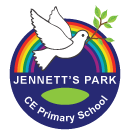Reading with children in KS2
BOOK REVIEW LINKS
Year 6: https://padlet.com/amerrills/jpyear6reviews
Year 5: https://padlet.com/amerrills/jpyear5reviews
Year 4: https://padlet.com/amerrills/jpyear4reviews
Year 3: https://padlet.com/amerrills/jpyear3reviews
Children in KS2 should be reading 4 x a week, for 15 minutes, to continue developing their reading skills and strategies.
At this age, children may want to read independently. We encourage this, as it can often increase a child’s confidence, resilience, and enjoyment of reading. However, we do recommend that a child reads to their adult at least once a week, and that daily discussions about a text still take place, to further deepen the child’s understanding of the text that they are reading.
At this stage of development, we focus on encouraging children to justify their answers, and to answer in full sentences. We often refer to this as APE: Answer, Prove and Explain.
Here, the children use evidence from the text, such as quotes (i.e. recalling exactly what a character has said, word-for-word), or recalling events and actions to back up their point. A keynote here is to discuss with your child how their evidence links to their point- is it relevant? Does it back up/ prove your child’s point? How does is do this?
Here is a list of potential questions that you may like to ask your child about their text:
Fiction prompts:
- Looking at the front cover, what do you think this book will be about? Why do you think that?
- Choose a character in the book. What impression do you get of them? Why do you get that impression? Provide at least 2 pieces of evidence.
- Write two facts and two opinions that you have gathered from the text.
- What genre is the book? (E.g. comedy/adventure/drama). How do you know?
- List three new words you have learned so far. Write down their meaning (in your own words) and use them correctly in a sentence.
- List three words in the text that you found challenging – provide two synonyms and two antonyms for each word. Use them correctly in a sentence.
- Predict what will happen next, using evidence from the book.
- What was the problem in the book? Was it solved? How?
- Did anyone in the book do something that you did not like? Why?
- When and where is the narrative set? How do you know?
- Who is the target audience? Why do you think that? Provide at least 3 pieces of evidence.
- What is the main theme in the book?
- What action from a character had the biggest effect? Why do you think that?
- Summarise the key events in this text, and put them in order.
- What was the author’s purpose or purposes for writing this book?
- If you could continue the story, what events would you include? Why?
- Does the main character’s feelings change during the book? When, and why?
- Does this narrative or writing style remind you of any other books or authors? Which ones and why?
- Did you like the way the story ended? Why?
- Which character would you like to be in the book? Why?
Non-fiction prompts
- Copy a short passage/a few facts that you found to be interesting. Explain what made it interesting for you.
- Write a summary of what you read in your book today.
- Explain some of the things that you have learned so far that you are not likely to forget.
- Describe the most interesting thing you learned from the book.
- What is the most important thing the author wanted you to learn or think about after reading the book? Explain.
- Describe any text features the author used and how they affected your reading experience.
- Describe anything or anyone you would like to know more about after reading the book. What about this person/event intrigued you? What else would you like to know?
School reading books:
Within KS2, most children will be using book-banded books as their reading books, alongside their chosen library books, which are not banded, and are purely to encourage children to read for pleasure.
Our book-banded texts range from level 8-13. Once a child can read level 13 fluently (meaning they read with intonation and notice grammar and punctuation), whilst showing a deep understanding of the text (i.e. they can answer questions about a text, and are using a range of reading strategies and skills), they can become a free reader.
Free reader:
By the end of Year 4, most children will have progressed onto Free Reader books. This means that a child has graduated through the book bands in school, and they can now select a text of their choice. However, to ensure that children continue to challenge themselves, and progress within their reading, we have implemented the Five Finger Test, to help with selecting the right book:
Five Finger Rule to use when choosing a book to read:
- A child will turn to any part of the book, and to complete this method over a few pages. The child holds up a finger for every word that they do not know. A challenging but suitable book would be one where the child makes on average two- three mistakes per page.
- This is easier to gauge when the child reads the pages aloud.
- A rough guide as to what has been found to be the correct ‘error rate’: if you were listening to the child reading, you might expect to hear an error about every minute.
